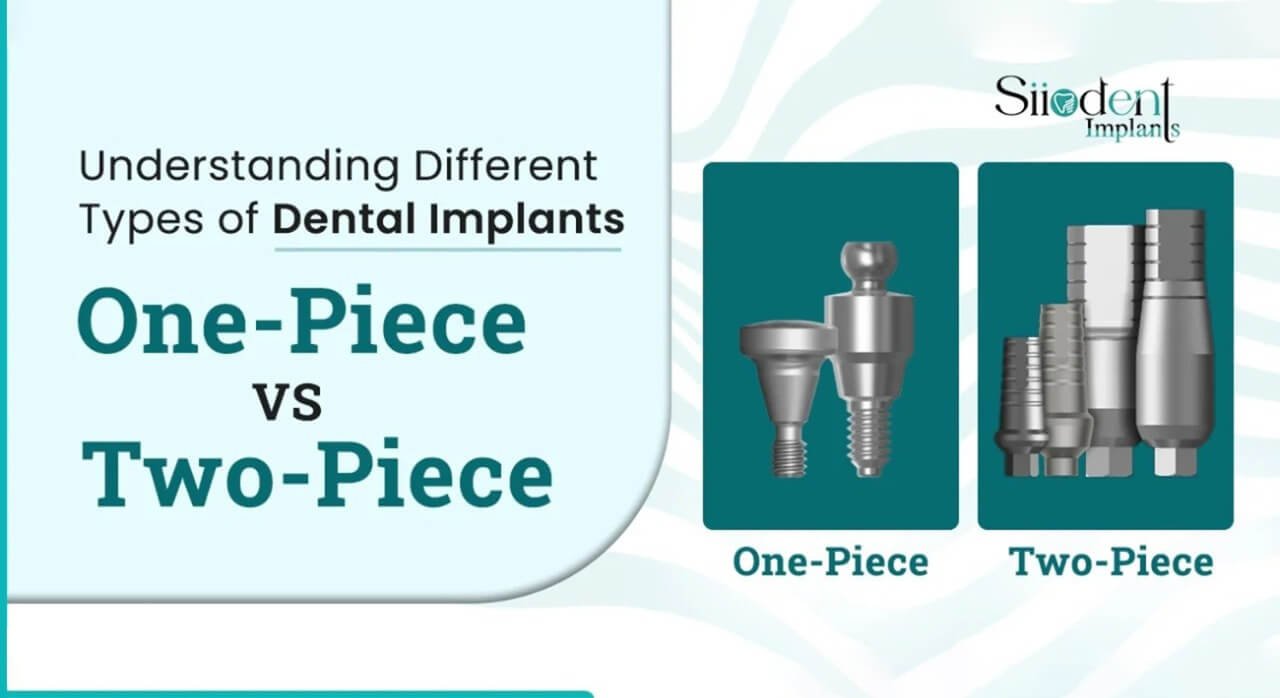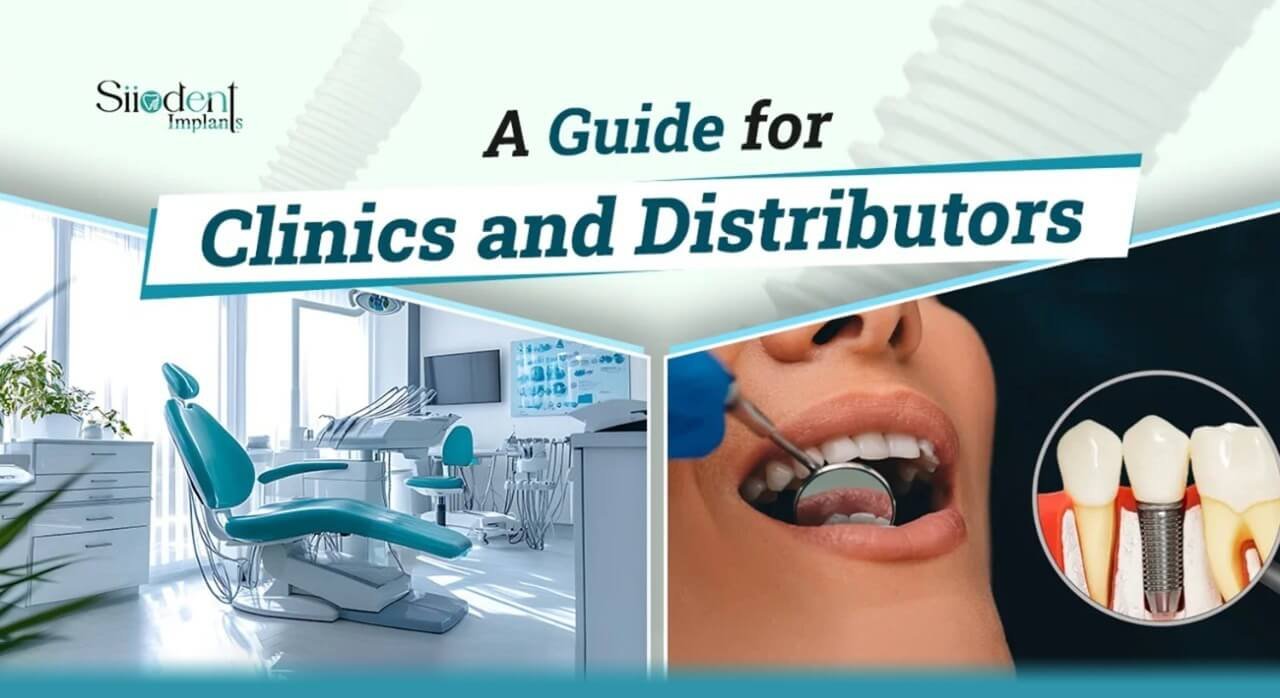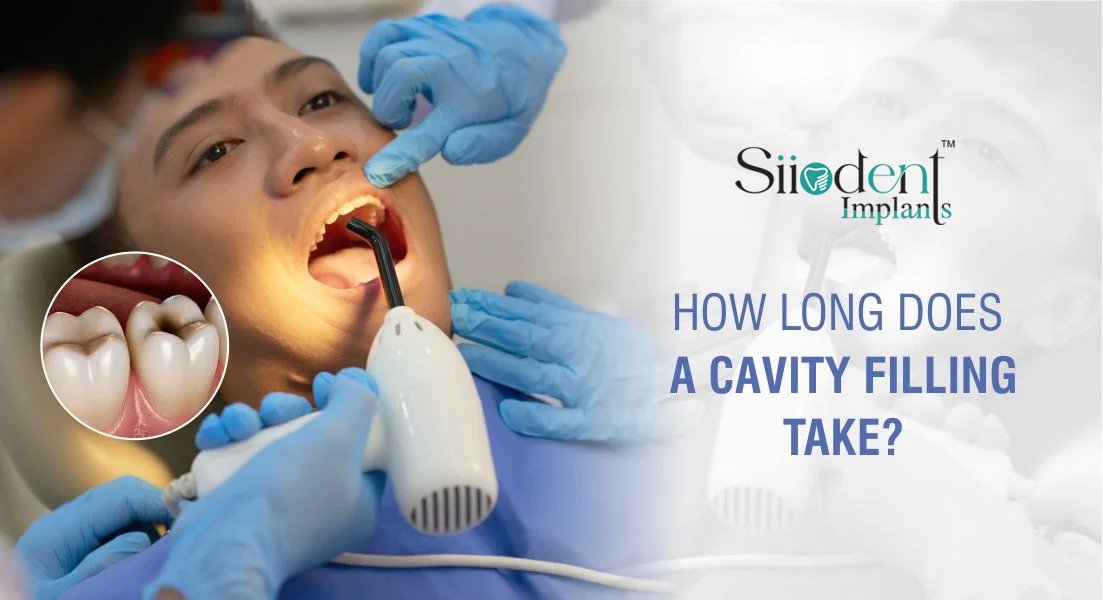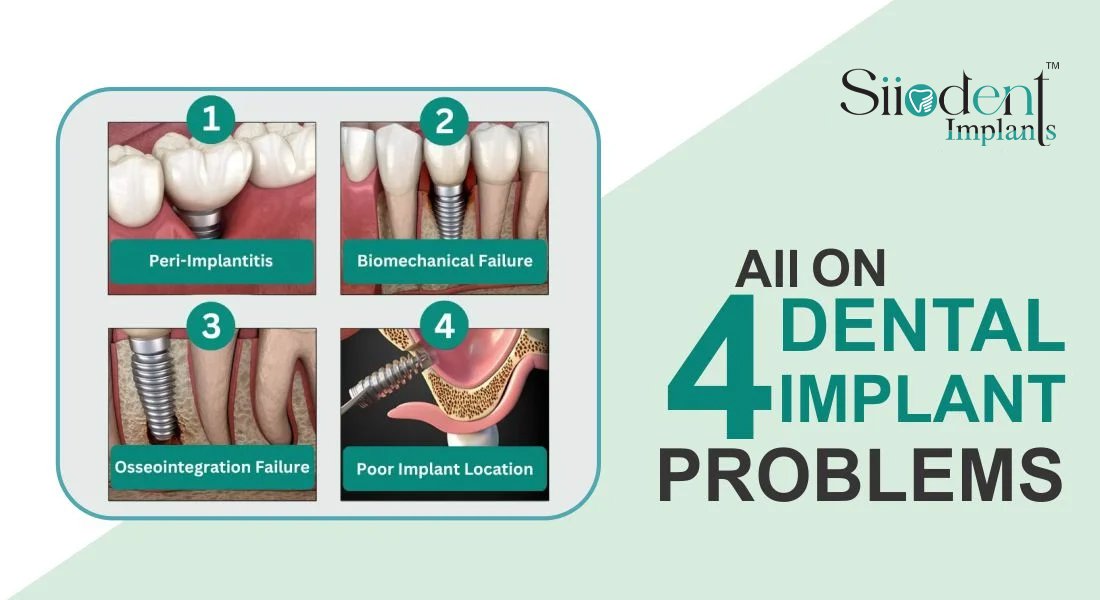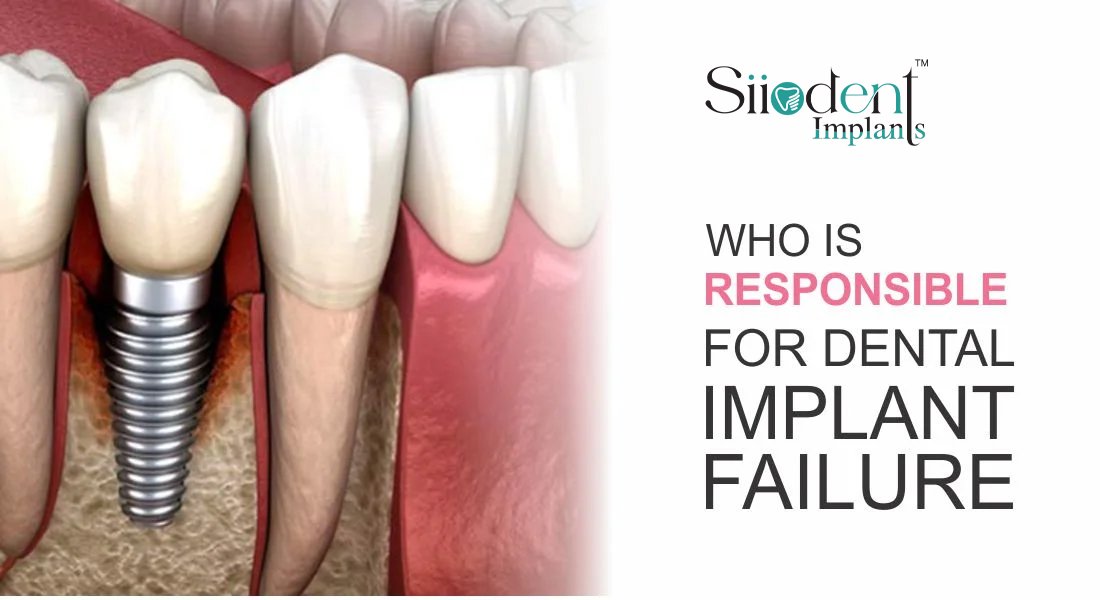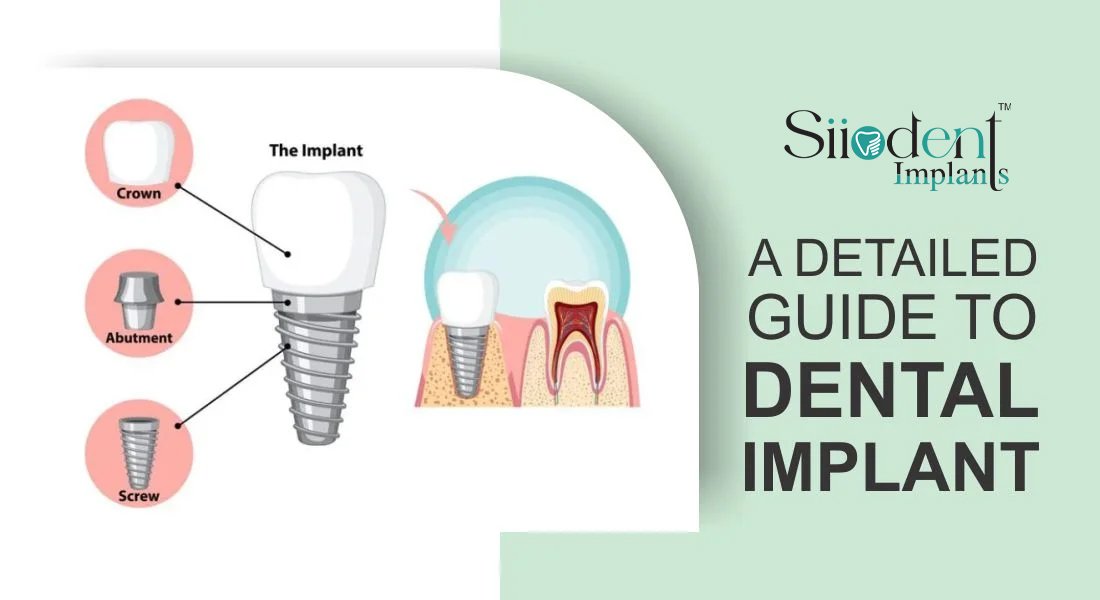Dental implants have transformed dentistry by providing a reliable, long-term solution for missing teeth, supporting prosthetic teeth like crowns, bridges, or dentures, typically made from titanium or biocompatible materials. In this market, two primary designs stand out: one-piece and two-piece implants. Understanding their differences is crucial for dentists and patients to make informed treatment decisions, especially for B2B customers like clinics and distributors served by manufacturers like Siiodent Implants.
What are One-Piece Dental Implants?
A one-piece implant, or monobloc implant, is a single unit where the implant body (the part inserted into the jawbone) and the abutment (the part connecting to the prosthetic tooth) are fused. This design eliminates the need for a separate connection, simplifying the structure.
Advantages of One-Piece Implants
- Simplified Design: With no connection between the implant and abutment, there is no risk of mechanical failure from screw loosening or abutment fracture, a common issue in two-piece implants. A study published in the National Journal of Maxillofacial Surgery highlights that one-piece implants reduce mechanical complications due to their solid structure (One-piece implants: Careful approach for complex rehabilitation).
- Better Bone Preservation: The absence of a microgap between the implant and abutment reduces the potential for bacterial colonization, which can lead to less peri-implant bone loss. Research suggests that this can lower the incidence of peri-implantitis, a significant concern in implant dentistry.
- Cost-Effective: One-piece implants are often less expensive due to having fewer components, making them an attractive option for budget-conscious practices. A narrative review notes their affordability, particularly in aesthetic zones.
- Easier Surgical Procedure: The integrated design can simplify surgery, with potential for immediate loading, where the prosthetic tooth is attached right after implant placement. This is particularly useful in cases with sufficient bone density and ideal positioning.
Disadvantages of One-Piece Implants
- Limited Flexibility: The abutment cannot be adjusted or changed after placement, which can make it difficult to correct for misalignments or customize the prosthetic restoration. This lack of flexibility is noted in clinical guidelines as a drawback for complex cases.
- Less Versatility: One-piece implants are typically designed for specific indications and may not be suitable for all clinical situations, such as cases requiring angled abutments or specific prosthetic designs, limiting their application in diverse scenarios.
What are Two-Piece Dental Implants?
A two-piece implant consists of two separate components: the implant body, which is placed into the jawbone, and the abutment, which is attached to the implant body and serves as the connection for the prosthetic tooth. This design allows for greater flexibility in prosthetic restoration.
Advantages of Two-Piece Implants
- Flexibility and Customization: The abutment can be selected or modified to fit specific prosthetic needs, allowing for greater flexibility in terms of angle, height, and design. This is particularly beneficial in the aesthetic zone or for patients with complex anatomical conditions, as noted in a systematic review.
- Prosthetic Options: Two-piece implants offer a wide range of prosthetic options, including different types of abutments for various restoration types, enhancing treatment versatility.
- Easier Maintenance: If there is an issue with the abutment or the prosthetic tooth, it can be replaced without removing the entire implant, making maintenance and repairs simpler. This is a significant advantage for long-term care, as highlighted in clinical practice updates (Stresses induced by one piece and two piece dental implants in All-on-4® implant supported prosthesis under simulated lateral occlusal loading: A finite element analysis).
Disadvantages of Two-Piece Implants
- Mechanical Complications: There is a risk of screw loosening or abutment fracture due to the connection between the implant and abutment, which can lead to failure. A study on implant-abutment connections found that screw loosening is a common complication, particularly under high occlusal loads, usually this doses not occur with quality manufactures. (Bacterial leakage in implants with different implant-abutment connections: an in vitro study).
- Peri-implantitis: The microgap between the implant and abutment can allow for bacterial colonization, potentially leading to peri-implantitis and bone loss. Research indicates that this microgap is a significant risk factor, with incidence rates varying by design. This situation will not occur if you deal with quality dental implant manufacturer.
Clinical Evidence: Comparing Outcomes
To provide a data-driven perspective, a systematic review and meta-analysis involving 270 participants and 434 implants, with a mean follow-up of 4 years, found no significant difference in implant survival rates or marginal bone loss between one-piece and two-piece implants. Specifically:
- Implant survival rate: Risk Ratio (RR) 0.89, 95% CI 0.27 to 2.98, P=.85.
- Marginal bone loss: Mean Difference (MD) -0.04 mm, 95% CI -0.43 to 0.35, P=.85.
This suggests that, clinically, both types are equally effective, which is an unexpected finding given the design differences. However, biomechanical studies, such as one using finite element analysis, indicate that one-piece implants may experience lower stresses under certain occlusal schemes, particularly with canine guidance, compared to two-piece implants under group function occlusion (Stresses induced by one piece and two piece dental implants in All-on-4® implant supported prosthesis under simulated lateral occlusal loading: A finite element analysis).
Clinical Applications: When to Choose Each Type
The choice between one-piece and two-piece dental implants depends on various factors, including the patient’s oral anatomy, the location of the missing tooth, the type of prosthetic restoration planned, and the dentist’s preference and experience.
When to Choose One-Piece Implants
- Simple Cases: For straightforward cases where the implant can be placed in an ideal position without the need for angulation corrections, such as single-tooth replacements in the posterior region.
- Immediate Loading: In situations where immediate loading is desired, one-piece implants can be used if they are designed for that purpose, particularly in patients with sufficient bone density. A clinical guideline notes that immediate loading can reduce treatment time, enhancing patient satisfaction.
- Cost Considerations: When cost is a significant factor, one-piece implants might be a more economical choice, especially for practices serving budget-conscious patients.
When to Choose Two-Piece Implants
- Complex Cases: For cases requiring precise control over the position and angle of the prosthetic tooth, such as in the aesthetic zone or where there is limited bone availability, two-piece dental implants offer greater flexibility.
- Custom Prosthetics: When specific prosthetic designs are needed, such as angled abutments or custom abutments for better emergence profiles, two-piece implants provide more options. A cohort study on two-piece zirconia implants showed high success rates in posterior restorations, supporting their use in complex scenarios (Two-piece zirconia implants in the posterior mandible and maxilla: A cohort study with a follow-up period of 9 years).
- Long-Term Flexibility: For patients who may need future adjustments or replacements of the prosthetic tooth without disturbing the implant, two-piece implants are preferable due to their modular design.
Case Examples from Siiodent’s Product Line
Siiodent Implants, a leading manufacturer based in the USA, offers a range of both one-piece and two-piece dental implants, each designed to meet specific clinical needs, catering to B2B customers in the USA, UK, Australia, and globally.
- One-Piece Dental Implants Example: Siiodent’s OP-100 is a one-piece implant designed for immediate loading in the anterior region, providing a straightforward solution for single-tooth replacements with excellent aesthetics. This implant is particularly useful for cases where cost and simplicity are priorities, aligning with the needs of budget-conscious clinics.
- Two-Piece Dental Implants Example: Siiodent’s TP-200 is a two-piece implant system that offers a variety of abutment options, making it suitable for complex cases requiring precise prosthetic control. This system is ideal for aesthetic zone restorations and cases needing customized solutions, ensuring flexibility for diverse patient needs.
Conclusion: Making the Right Choice for Your Practice
In conclusion, both one-piece and two-piece dental implants have their own set of advantages and disadvantages. The decision on which type to use should be based on a thorough evaluation of the patient’s specific needs, the clinical situation, and the dentist’s expertise.
By understanding these differences, dentists can make informed decisions to provide the best possible care for their patients, ensuring long-term success and satisfaction. For more information on Siiodent’s innovative implant solutions, contact our team to explore how we can support your practice.
Key Citations
- One-piece versus two-piece ceramic dental implants
- Stresses induced by one piece and two piece dental implants in All-on-4® implant supported prosthesis under simulated lateral occlusal loading: A finite element analysis
- One-piece implants: Careful approach for complex rehabilitation
- Dental Implants Market Size and Growth Projection
- Two-piece zirconia implants in the posterior mandible and maxilla: A cohort study with a follow-up period of 9 years

